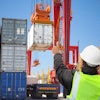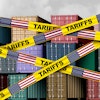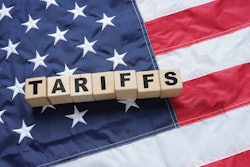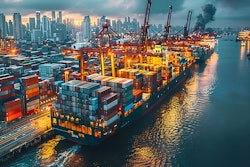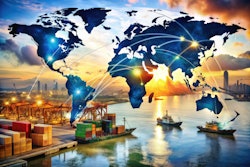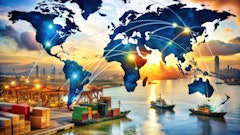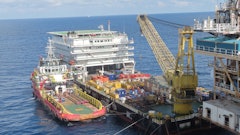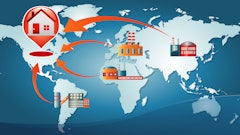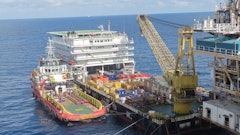
New tariffs and growing economic pressures are forcing procurement leaders to rethink their sourcing strategies, fast. As costs climb across various industries, including manufacturing, electronics, and agriculture, the call to pivot is growing louder. Gartner recently noted that almost three-fourths of supply chain leaders see tariff changes as a catalyst to significantly alter their supply chain strategies in 2025.
Nearshoring has become a buzzy solution for companies facing rising tariffs, supply disruptions, and geopolitical uncertainty. On the surface, relocating suppliers closer to home promises faster delivery, greater control, and reduced risk. But despite the appeal and urgency, many organizations are failing to make meaningful progress.
Why? Because most nearshoring strategies are built on assumptions, not intelligence. Procurement teams know they need new suppliers, but too often they don’t know where to find them, how to assess them, or whether they can deliver. The result is a frustrating disconnect: nearshoring as a boardroom mandate, not a supply chain reality.
To move forward, companies must separate fact from fiction and understand that visibility, not geography, is what truly drives resilience.
Fact: Nearshoring is an outcome, not a strategy.
It’s easy to see why nearshoring is attractive. The promise of reduced risk, better responsiveness, and more control is appealing to any organization navigating today’s volatility. But too often, companies confuse the destination with the roadmap. Shifting your supplier base requires a deliberate, data-driven strategy, and that’s where most nearshoring efforts fall apart.
According to new data, less than half of procurement leaders have a defined plan for responding to new tariffs, leaving companies stuck in a reactive cycle. Without the foundation of clear, auditable intelligence, nearshoring efforts tend to stall, delayed by misalignment, uncertainty, or internal resistance. And even when the intent is there, outdated tools and workflows slow progress to a crawl.
Successful organizations don’t just react to tariffs. They proactively assess risk, benchmark supplier performance, and continuously enrich their supplier data so they can pivot with precision, not panic.
Fiction: We just need to find suppliers closer to home.
It’s tempting to think nearshoring is simply a matter of shifting your sourcing map. But proximity alone doesn’t solve for agility, compliance, or capacity. The real issue is not location, it’s visibility.
Procurement teams still struggle to look beyond Tier 1 suppliers. Even fewer can vet the domestic alternatives available to them for factors like industry experience, compliance, and long-term viability. Meanwhile, the urgency to do so is growing. For example, new tariffs on auto components (transmissions, wiring harnesses, aluminum parts, etc.) are already rippling across the automotive supply chain, which relies heavily on imports from Canada and Mexico. New tariffs on both countries will increase costs and create cascading pressures. Yet, Supplier.io data shows there are over 66,000 U.S.-based machine shops and 40,000 transmission suppliers that could serve as potential partners. The capacity exists. The visibility does not.
Fiction: Delays mean there aren’t enough suppliers.
The problem isn’t supply, it’s discoverability. In reality, there is deep domestic capacity across industries.
Supplier.io’s data shows strong supplier networks across even the most impacted industries, including:
● Electronics: 100,000-plus component providers, 150,000-plus computer manufacturers, 114,000-plus semiconductor suppliers
● Agriculture and food: 44,000 fruit and vegetable producers, 44,000 meat producers, and 11,000 dairy suppliers
● Manufacturing: 29,000 precision manufacturers and 24,000 nuts-and-bolts producers
Yet, 36% of procurement teams still rely on basic internet searches to identify new suppliers. That’s like navigating a storm with a paper map. In fast-moving industries like electronics and consumer goods, even a small misalignment can result in stockouts, unmet customer expectations, and damaged brand reputation.
In an era where every delay can mean missed revenue, that kind of approach simply doesn’t cut it. Without access to real-time, multi-tier supplier data, organizations will continue to overlook qualified, available partners, no matter how close they are.
Fact: Supplier intelligence is the new baseline for resilience.
Old sourcing strategies were built on relationships and instinct. Today’s supply chains require something sharper: intelligence.
Making sourcing decisions based on long-standing relationships or regional familiarity won’t work in today’s volatile trade environment. Supplier intelligence is no longer a nice-to-have; it’s an essential infrastructure. Especially under tariff pressure, companies that can quickly identify, vet, and onboard domestic suppliers gain a real advantage
Leading companies are using supplier data the way CFOs use financial models. This is what they’re looking at:
● Mapping high-risk supply categories, vulnerable tariffs, and cost swings
● Benchmarking performance against industry peers to identify gaps and opportunities
● Expanding relationships with small and alternative suppliers to increase flexibility and local reach
● Investing in supplier data enrichment to ensure sourcing decisions are based on current, comprehensive intelligence
In fact, 21% of companies are now actively shifting spend to small and local suppliers, many of whom are better positioned to deliver agility, transparency, and cost control. This signals a broader change in mindset: resilience is no longer about having the most suppliers; it's about having the right suppliers.
Fiction: Nearshoring is a long-term project.
For many, nearshoring feels like a five-year plan. But with economic pressure mounting and margins shrinking, companies can’t afford to wait. Retailers, for instance, are grappling with tariffs on electronics, apparel, and food, all of which eat into already-thin profits. Delays in adjusting supplier networks directly translate into lost business.
The truth is, speed matters. Companies that build a foundation of real-time visibility and flexible supplier data can act decisively, replacing assumptions with insight and inefficiency with execution.
The bottom line: Visibility first, action second.
Nearshoring can’t succeed without supplier intelligence. To respond to shifting trade policy, economic pressure, and global disruption, companies need more than strategy. They need clarity. That means knowing not just where suppliers are, but who they are, what they can do, and how fast they can mobilize.
The companies that win won’t be the ones who talk about nearshoring the most. They’ll be the ones who can pull it off because they built their supply chains on fact, not fiction.


